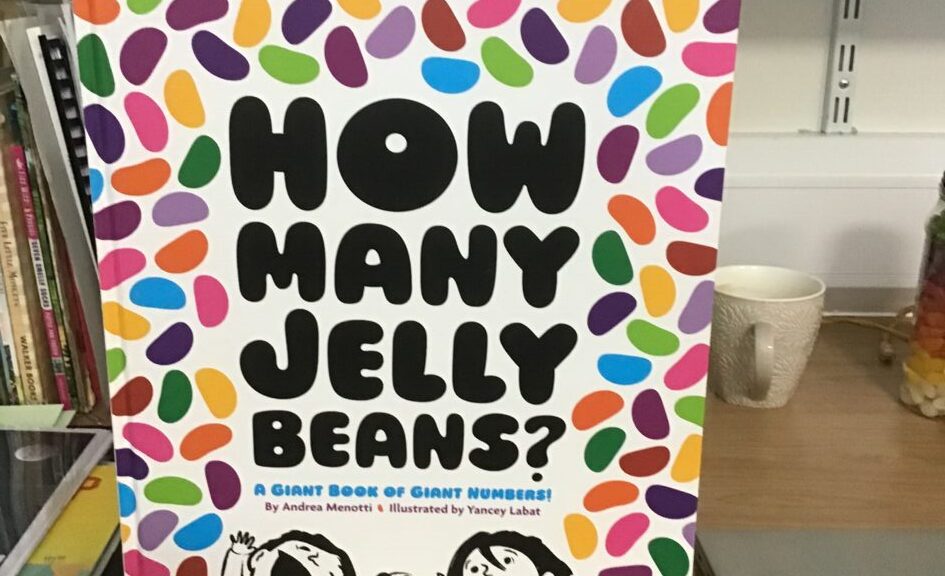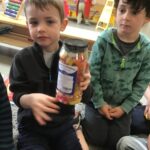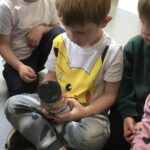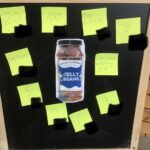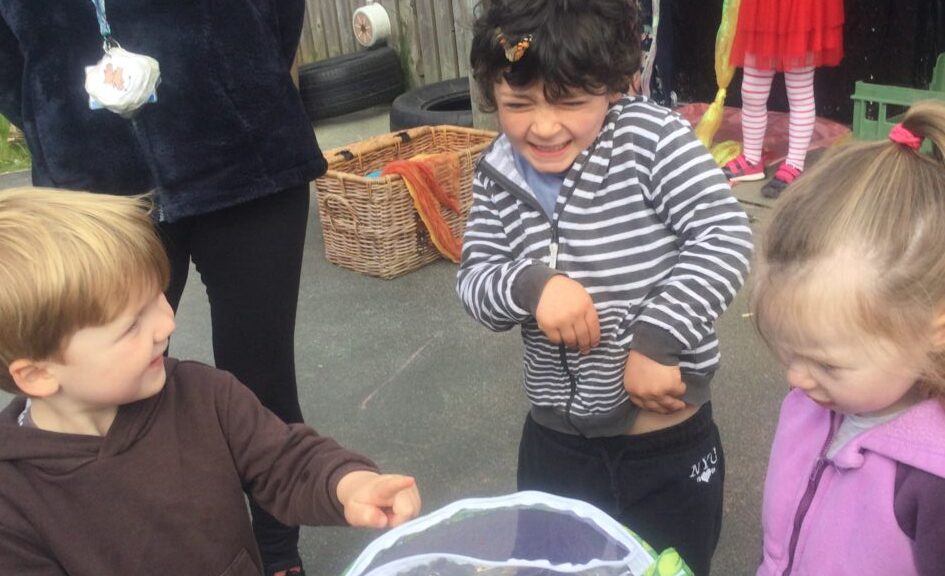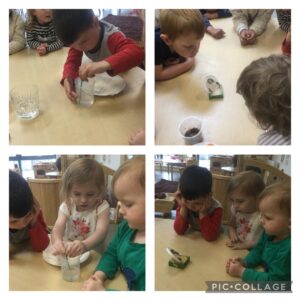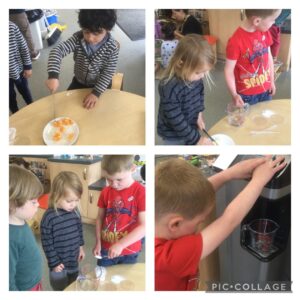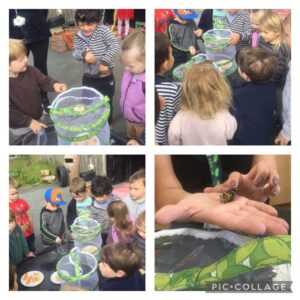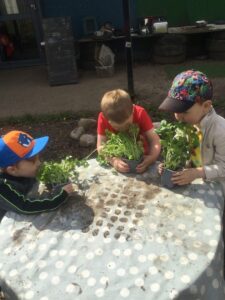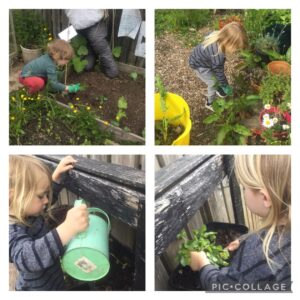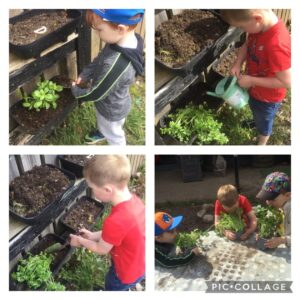Some of our children have been asking to explore ‘big big numbers’ so today we introduced them to the story of How Many Jelly Beans?
 We began the story of Emma and Aiden who are discussing how many jelly beans they can eat. Starting with ten jelly beans, the number of jelly beans gets higher and higher as they try to outdo each other with larger and larger amounts. Each quantity is represented in the same amount of jellybeans which prompted lots of discussion from the children as the numbers increased more and more.
We began the story of Emma and Aiden who are discussing how many jelly beans they can eat. Starting with ten jelly beans, the number of jelly beans gets higher and higher as they try to outdo each other with larger and larger amounts. Each quantity is represented in the same amount of jellybeans which prompted lots of discussion from the children as the numbers increased more and more.
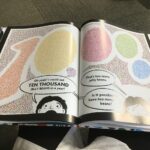 “Look at all these jelly beans!”
“Look at all these jelly beans!”
”1000 has three zeros.”
“There are too many to count!”
You might be sick if you ate all of them!”
The children got more and more excited as the numbers got higher and higher and soon the whole page was full of jelly beans as we got to ONE MILLION JELLY BEANS!

When we finished the story Helen invited us to carry out our very own Jelly Bean Challenge. We had a large jar of jelly beans and our challenge was to guess how many were inside. We all took a turn of holding the jar to help us estimate how many. We learned that estimating means having a look and guessing how many by what we could see.
”I think there is one million and forty four”
“I think there is a trillion!”
We decided that we wanted to count our jelly beans to see how many we had. We had lots of discussion about how we could count them and we finally decided that we would first sort them into colours and then count them.
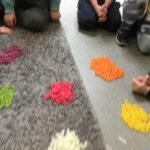
It took a long time to count them as we had so many but we worked together as a team and found that we had 136 jelly beans altogether!
We had a great morning of counting and estimating and perhaps even more surprisingly, no jelly beans were sneakily eaten!
Article 28 You have the right to education

